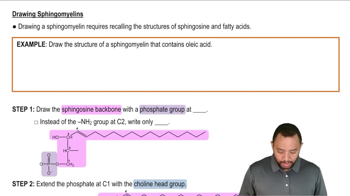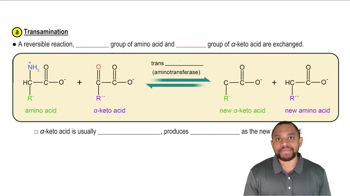Identify the following features of this phospholipid, which is abundant in the myelin sheath that surrounds nerve cells:
b. What is the fatty acid?
 Verified step by step guidance
Verified step by step guidance Verified video answer for a similar problem:
Verified video answer for a similar problem:



 1:32m
1:32mMaster Sphingomyelins Concept 1 with a bite sized video explanation from Jules
Start learning